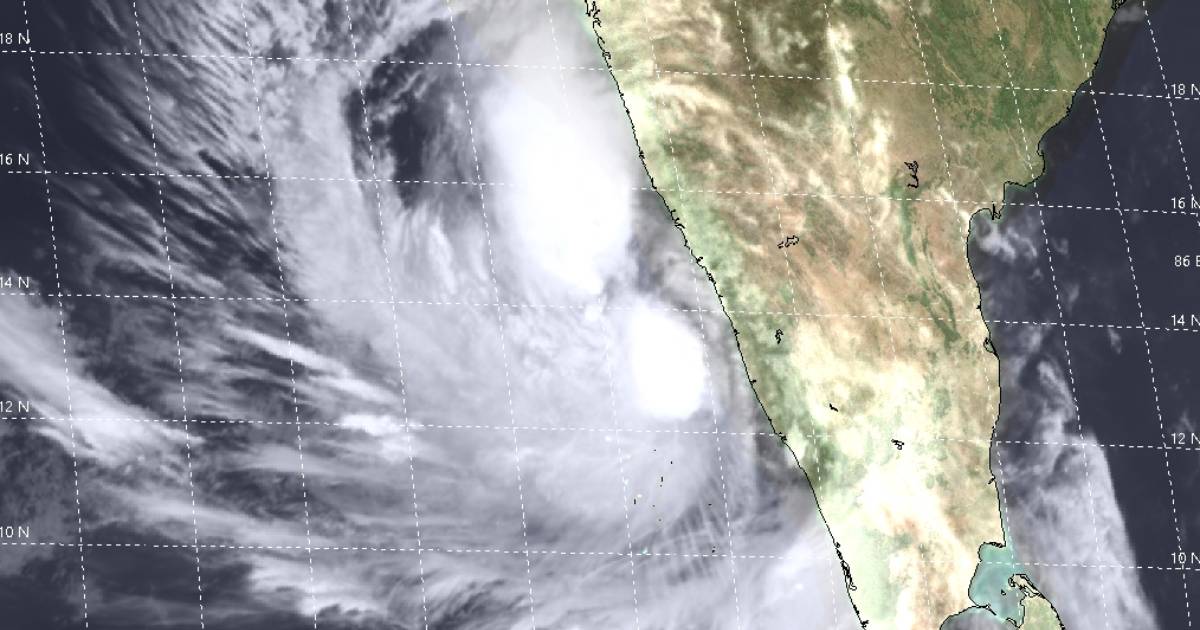The India Meteorological Department (IMD) said on Sunday that Cyclone Tauktae has intensified into a “very severe cyclonic storm” over the East-central Arabian Sea and is very likely to intensify further during the next 12 hours. Due to the cyclone, South Western Railway has cancelled several trains on Goa route.
Karnataka State Disaster Management Authority (KSDMA) said that at least four people have lost their lives and 73 villages across six districts in Karnataka are affected amid the intensification of Cyclone Tauktae. Meanwhile, heavy rains lashed in Kerala and the water level rose in many dams.
In many dams across Kerala, the water level showed a rising trend on Sunday even as cyclone Tauktae moved away from the state’s coast after wreaking havoc. India Meteorological Department (IMD) has issued orange alerts, a warning that indicates heavy to very heavy rain, on Sunday in three districts, Ernakulam, Idukki, and Malappuram.
Also Read: Impact of the Madden Julian Oscillation on the rainfall over Indian subcontinent
By late afternoon on Sunday, Cyclonic Tauktae has moved north north-west direction and has reached Goa. IMD has said that gusty winds, high tides, and heavy rainfall will continue in Goa for the entire day today. State Power Minister of Goa, Nilesh Cabral stated that power supply in majority areas of the state was disrupted as several electric poles got uprooted due to the high-speed winds.
During the past six hours, the cyclone moved nearly northwards over east-central Arabian Sea with a speed of about 9kmph, and intensified into a very severe cyclonic storm. It lay centred over the east-central Arabian Sea, about 150km southwest of Panaji. IMD said that the cyclone is very likely to intensify further during the next 12 hours. Cyclonic storm ‘Tauktae’ is very likely to move north-northwestwards and reach Gujarat coast in the evening hours of May 17 and cross Gujarat coast between Porbandar and Mahuva (Bhavnagar district) around May 18 early morning.
‘Tauktae’ will pass through the Union Territory of Daman and Diu and Dadra and Nagar Haveli and reach the Gujarat coast by the morning of May 18.
Also Read: Can Indian Ocean Dipole alone help us understand the Indian monsoon?
Extremely heavy rainfall is being experienced in Kerala, Karnataka, Goa as well as parts of Maharashtra, under the influence of the cyclone. With transport services suspended, these states are on a high vigil. Emergency and relief teams are on the lookout for possible after-effects.
In Kerala, two people have died after torrential rains with high tidal waves wreaking havoc. Since Friday night, widespread uprooting of trees, water-logging, disruption of power has been a state-wide phenomenon. Despite the risks associated with the ongoing pandemic, the situation has forced the state government to shift hundreds of families to relief camps.
In its preparation, the National Disaster Response Force (NDRF) has increased the number of responding teams from 53 to 100. These NDRF teams are mobilized for Kerala, Karnataka, Tamil Nadu, Gujarat, Goa, and Maharashtra. Out of these, 48 teams are being pre-deployed while 20 are being kept on standby. An additional 32 teams are being kept as backup.





